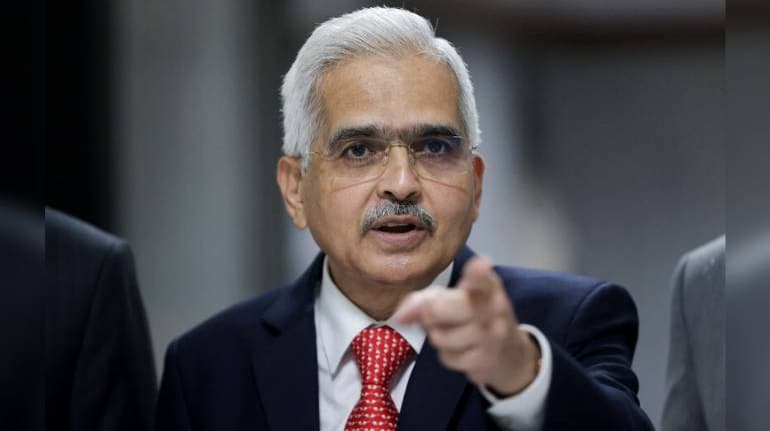



The Reserve Bank of India’s (RBI) decision on June 8 to increase repo rate by 50 basis points (bps) to 4.90 percent will lead to a 20-25 bps rise in interest rates of banks’ loans and deposits, senior bankers told Moneycontrol.
As per K Paul Thomas, managing director and chief executive officer (MD & CEO) of ESAF Small Finance Bank, deposit rates could rise by 20-25 bps. A similar increase will be seen in lending rates, he said.
With the RBI raising its inflation forecast for FY23 by 100 bps to 6.7 percent, Thomas said the central bank will continue hiking its policy rate. The RBI had last increased the repo rate by 40 bps at an off-cycle meet on May 4 to 4.40 percent.
“The quantum of the hike shall depend on the inflation trajectory. Since the RBI is giving equal importance to growth, there shall be no effects on credit demand,” Thomas told Moneycontrol.
Renu Sud Karnad, MD, Housing Development Finance Corporation (HDFC), shares similar views.
“The 50-bps repo rate hike by the RBI will cause lending rates and deposit rates to go up. It is good news for fixed deposit investors. The interest rate hike will result in home loan interest rates going up and will impact the EMIs (equated monthly instalments),” she told Moneycontrol.
“The RBI’s future course on rate hike will depend on how inflation pans out. If the inflation outlook does not improve, the RBI may have to continue on its rate hiking trajectory,” she added.
Credit demand
Even as the RBI has cumulatively increased repo rate by 90 bps in a little over a month and with expectation of further rate hikes, credit demand is expected to remain buoyant, bankers say.
There would be a 25 bps increase in lending rate but it will not affect credit demand as it is based on economic activity, said Umesh Revankar, vice-chairman and MD of Shriram Transport Finance.
After hovering around the single-digit mark during the worst of the Covid-19 pandemic stress, banks’ non-food credit growth has started hitting lower double-digit figures.
The RBI’s data on sectoral deployment of credit shows that banks’ credit grew 11.04 percent year-on-year (y-o-y) to Rs 120.27 lakh crore in the fortnight ended May 20. Deposits, on the other hand, rose by 9.27 percent y-o-y to Rs 165.74 lakh crore during the same period.
The central bank retaining its growth forecast for FY23 at 7.2 percent signals sustained credit demand despite rate hikes, said Suresh Khatanhar, deputy managing director at IDBI Bank.
“The demand seems to be broad-based with improvement in credit demand from both rural and urban areas, and contact-intensive services related to trade, hotels and transport. As per the MPC (monetary policy committee) assessment, the capacity utilisation of the manufacturing sector increased to 74.5 percent in Q4FY22 from 72.4 percent in Q3 and the same is likely to further increase in 2022-23,” Khatanhar said.
Deleveraged corporate balance sheets combined with banks’ stronger balance sheets and the RBI’s projections showing inflation staying within the MPC target upper limit of 6 percent starting Q4 are all good signs for credit offtake, he added.
According to South Indian Bank MD & CEO Murali Ramakrishnan, India’s economy will bounce back once geopolitical tensions ease and supply chain challenges caused by the pandemic are mitigated.
“With demand in various quarters already showing recovery after a prolonged period of decline due to the pandemic, we are confident that interest rates will soon be aligned to the country’s growth aspirations,” he said.
Boost to UCBs
The regulator on Wednesday raised the limit on individual housing loans that can be extended by urban and rural cooperative banks (UCBs and RCBs) by 100 percent. The limits were last revised in 2011 for UCBs and in 2009 for RCBs.
The RBI also allowed RCBs to lend up to 5 percent of their total assets to the sensitive commercial real estate sector. It also allowed UCBs to offer doorstep banking services.
The RBI’s steps taken on Wednesday will increase credit flows to the housing sector and boost revenue growth for the cooperative banking sector, said Ashish Singhal, MD, SVC Co-operative Bank. Doorstep banking will help the lender bring more personalised attention and convenience to customers, especially senior citizens and the differently abled, he added.
Unlike scheduled commercial banks (SCBs), UCBs are regulated by the RBI and the respective state government. Due to the lack of complete regulation, there have been cases of frauds in the sector with PMC Bank being a point in case.
Overall credit growth in the UCB sector has lagged SCBs in recent years, reflecting in low credit to deposit (CD) ratios. The CD ratio for UCBs stood at 59 percent as on March 31, 2021, against 70-74 percent for SCBs during the same period.
“The enhancement in lending limits for housing loans extended by UCBs and RCBs as well as permitting RCBs to lend to the commercial real estate segment (residential housing) will support book growth and profitability for these entities as they will be able to cater to a wider set of customers,” said Aashay Choksey, assistant vice-president of financial sector ratings at ICRA.
“This may, however, increase competitive intensity in micro markets where UCBs operate alongside other SCBs and NBFCs,” he added.
Discover the latest Business News, Sensex, and Nifty updates. Obtain Personal Finance insights, tax queries, and expert opinions on Moneycontrol or download the Moneycontrol App to stay updated!